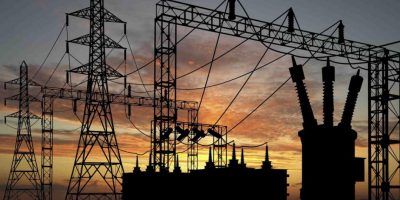
Frustrated by persistent power outages and soaring costs of diesel generators, six Nigerian universities, telecoms giant MTN Nigeria, the Nigerian Defence Academy, and 16 other companies have obtained permits to exit the national grid, choosing instead to generate their own electricity through captive power arrangements.
At the heart of the mass exit lies Nigeria’s troubled power grid. The national grid has often plunged the entire country into darkness without warning as generation capacity fluctuates between 3,000 megawatts (MW) and 4,500 MW, grossly insufficient for a population of over 200 million people.
Data sourced from the newly released document from the Nigerian Electricity Regulatory Commission (NERC) showed about 24 entities, spanning educational institutions, telecommunications, and heavy industries, received 24 captive power generation permits in 2024, allowing private entities to produce power independently for their internal use.
Captive power generation refers to electricity produced by a company primarily for its consumption, typically bypassing the national grid. This model is increasingly becoming attractive to businesses frustrated by the erratic and unreliable supply from the national grid.
Six universities
A further breakdown shows that the University of Abuja in Gwagwalada, the Federal Capital Territory (FCT) secured a 3.00 MW permit, which aims to ensure consistent power for its academic and administrative functions.
The University of Calabar & Teaching Hospital in Cross River State have a 7.00MW capacity, and seek to safeguard critical medical services and research laboratories from disruptions.
University of Agriculture Michael Okpara in Umuetuke, Abia State (3.00 MW), and the Federal University of Agriculture, Abeokuta in Ogun State (3.00 MW), both vital for agricultural research and training, have also exited the grid.
The University of Maiduguri & Teaching Hospital in Borno State got a 12.00 MW permit, highlighting the power needs of a large university and a major medical facility, especially in a region facing unique challenges.
The Federal University Gashuwa in Sabon Gari, Yobe State (1.50 MW), and the Nile University of Nigeria in Jabi, Abuja (10.00 MW), complete the list of academic institutions now charting their energy course.
For these institutions, stable power is not a luxury but a fundamental requirement for uninterrupted lectures, laboratory experiments, data centers, and student welfare.
MTN Nigeria joins
Another significant entry on the list is MTN Nigeria Communication Limited. As the country’s leading telecommunications provider, MTN’s reliance on stable power is paramount for maintaining network uptime, data services, and voice calls across its vast subscriber base. The company has secured multiple permits for its Lagos State operations, totalling an impressive 15.94 MW.
Industries not exception
Beyond education and telecommunications, a diverse array of 13 other firms has also committed to captive power generation, showcasing the broad impact of the power crisis on Nigeria’s industrial base.
In the manufacturing sector, SweetCo Foods Limited in Oyo State (1.50 MW) and Armilo Plastics Limited in Lagos State (1.13 MW) are securing their processes, where even minor power fluctuations can lead to significant material waste and production delays.
Heavy industries like African Steel Mills Nigeria Limited in Lagos State (20.00 MW) and West African Ceramics Limited in Kogi State (10.00 MW), along with Royal Engineered Stones Limited also in Kogi State (4.00 MW), require massive, continuous power for their energy-intensive operations. They are also exiting the grid.
The beverage industry, a major contributor to Nigeria’s GDP, is also heavily represented. Nigeria Breweries Plc has secured multiple permits across its facilities: Aba Breweries in Abia State (5.60 MW), Ibadan Breweries in Oyo State (7.20 MW), Ama Breweries in Enugu State (10.59 MW), and Aba Malting Plant in Abia State (7.97 MW).
Other notable firms include: Ro-Marong Nigeria Ltd in Amuwo Odofin, Lagos (4.40 MW), Quantum Paper Limited in Lekki (7.00 MW), and Psaltry International Company Limited in Alayide Village, Oyo State (1.10 MW).
Even the Nigerian Defence Academy (NDA) in Kaduna State, a critical national security institution, has secured a 2.50 MW permit, underscoring the pervasive nature of the power challenge across all facets of Nigerian society.
Why the shift?
Nigeria’s national grid has become increasingly unstable, suffering multiple collapses over the past year. Businesses and public institutions have grown weary of relying on the inconsistent supply that undermines productivity, safety, and economic growth.
“Captive generation creates a two-tier system: one for those who can afford stability and one for everyone else stuck with blackout-prone supply,” said Aisha Salami, an energy policy consultant. “As industries leave the grid, they take with them the cash flow needed to sustain DisCos and GenCos.”
For universities and teaching hospitals, power outages affect not only academic activities but also clinical services, research output, and sensitive medical equipment.
“The fact that the NDA is developing its power supply should deeply worry policymakers,” said Yemi Adebayo, an energy governance expert. “When the country’s most sensitive institutions can’t trust the national grid, it’s a signal of deep systemic failure.”
Adetayo Adegbenle, PowerUp Nigeria’s executive director, said the exit of major companies from the national grid is detrimental to grid stability.
He argued that these companies, ideally ‘anchor tenants,’ are crucial for a balanced system where demand matches generation at 50Hz frequency.
Their departure, he stated, shifts the burden largely onto residential consumers, contributing to grid instability and higher prices.
Adegbenle advocated for incentives to entice the businesses back, believing it would lead to a more stable and affordable grid, leveraging the country’s existing stranded generation capacity.
Left behind & overburdened
The consequences of this shift are cascading down the supply chain, and it is Nigeria’s residential users who are paying the price.
This imbalance is most visible in Band A, a category of customers promised at least 20 hours of electricity per day. In April 2024, the Nigerian Electricity Regulatory Commission (NERC) approved a new tariff of N206.80/kWh for Band A users, a significant jump from previous rates.
“It’s like we’re being punished for being on Band A,” said Ifeanyi Nwosu, a banker who lives in a serviced apartment in Lekki. “We barely get up to 15 hours of power some days, but we’re paying more than anyone else.”
Experts argue that Band A customers are being used to make up for lost revenue from industrial and commercial users. As wealthier customers flee the grid, those who remain are being charged more to keep the system afloat.
“Band A is carrying the weight for the commercial class,” Aisha Mohammed, an energy analyst at the Lagos-based Center for Development Studies, said. “The grid was never designed to run profitably on residential customers alone. Their consumption is lower, and many are on estimated billing or defaulting payments. It’s not sustainable.”
For residents under the Band A electricity tariff, the result is a vicious cycle. Poor supply leads to higher costs, which results in more self-generation through petrol or diesel generators, pushing up household expenditure, as the dream of constant power remains elusive. (BusinessDay)

